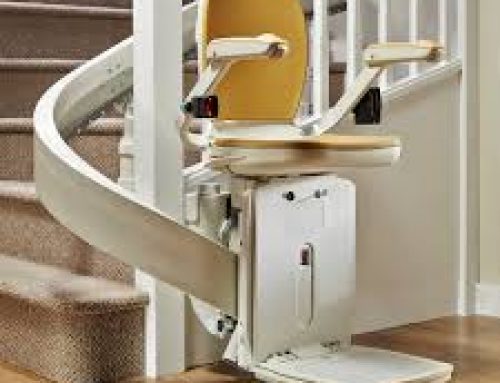‘;
}
var sContent = ”+
‘‘+
‘‘+
‘‘+
‘‘+
‘
‘;
return sContent;
}
$.get(‘http://www.iowastatedaily.com/tncms/search/mlt/?origin=7de9da9e-9cc6-11e7-8e6d-af4e34ce088d&app=editorial&preview=1&type=article%2Ccollection%2Cvideo%2Cyoutube’).then(function(oResponse, sStatus, oXHR){
if( typeof oResponse.assets === ‘object’ && oResponse.assets.length > 0 ){
var oPrev,oNext = null;
// try to match in index
$(oResponse.assets).each(function(i,oAsset){
if( oAsset.id === ‘7de9da9e-9cc6-11e7-8e6d-af4e34ce088d’ ){
oNext = oResponse.assets[(i+1)];
oPrev = oResponse.assets[(i-1)];
return false;
}
});
// no index match
if( !oNext && !oPrev ){
oPrev = oResponse.assets[0];
oNext = oResponse.assets[1];
// end of list, prev no next
} else if( !oNext && oPrev ){
oNext = oResponse.assets[0];
// start of list, next no prev
} else if( oNext && !oPrev ){
oPrev = oResponse.assets[(oResponse.assets.length-1)];
}
// append links
if( oPrev ){
$(‘#paging-prev-7de9da9e-9cc6-11e7-8e6d-af4e34ce088d’).append(asset_prevNextContent(oPrev, ‘prev’)).show();
setTimeout(function(){
$(‘#paging-prev-7de9da9e-9cc6-11e7-8e6d-af4e34ce088d’).removeClass(‘offset’);
}, 200);
}
if( oNext ){
$(‘#paging-next-7de9da9e-9cc6-11e7-8e6d-af4e34ce088d’).append(asset_prevNextContent(oNext)).show();
setTimeout(function(){
$(‘#paging-next-7de9da9e-9cc6-11e7-8e6d-af4e34ce088d’).removeClass(‘offset’);
}, 200);
// fix conflicting content
$(‘.share-container.headline-right’).addClass(‘hidden-sm’);
}
// bind tracking event handlers
$(‘#asset-paging-7de9da9e-9cc6-11e7-8e6d-af4e34ce088d a’).on(‘click’, function(e){
var sAction = ($(this).data(‘direction’) === ‘right’) ? ‘next’ : ‘previous’;
__tnt.trackEvent({‘category’:’tnt-prev-next’,’action’:sAction, ‘label’:’article’, ‘value’:’1′});
return true;
});
}
}, function(){
__tnt.log(‘Error: ‘+ sStatus);
});var bPrevNextScroll = false;
$(window).on(‘scroll mousewheel’, function(){
if( !bPrevNextScroll && $(‘.asset-body’).length > 0 && !$(‘body’).hasClass(‘trigger-disabled’) && !__tnt.elementOnScreen(‘#asset-photo-carousel’) ){
bPrevNextScroll = true;
var sNextTrigger = ‘trigger-next’;
setTimeout(function(){
if( __tnt.elementOnScreen(‘.asset-body’, 250) ){
$(‘body’).removeClass(sNextTrigger);
} else {
$(‘body’).addClass(sNextTrigger);
}
bPrevNextScroll = false;
}, 200);
}
});$(window).on(“load resize”, function(){
var sCondTrigger = ‘trigger-condensed’;
if( window.innerWidth > 991 && window.innerWidth
What is a service animal?
- A service animal is an animal, most commonly a dog, that has been individually trained to perform tasks and do work catered to an individual’s disability.
- Service animals are not required to be professionally trained.
- Service animals do not need to be “certified” or “registered” as service animals. Organizations or people who sell certification or registration for service animals are not recognized by the Americans with Disabilities Act (ADA) or U.S. Department of Justice.
- Service animals are not pets under the law.
Different kinds of service animals
- Guide dogs help the blind navigate areas without the use of a white cane. Guide dogs can alert their owner of changes in terrain and elevation as well.
- Hearing dogs alert those who are deaf or hard of hearing to important sounds. This may include doorbells, alarm clocks, smoke alarms, phones and more.
- Mobility dogs perform a variety of tasks for a variety of disabilities. Individuals in wheelchairs can have a mobility dog help them up ramps. Mobility dogs can also retrieve hard to reach items and open and close doors, drawers, cupboards and other household amenities.
- Seizure alert animals are trained to sense seizures before they happen and assist their owner appropriately.
- Psychiatric service animals are trained to help their owners for different psychiatric conditions. For example, an animal can be trained to sense an anxiety attack and calm down their owner consequently. Autism support animals can be trained on a case by case basis to assist those on the autism spectrum.
What NOT to do with a service animal
- Do NOT distract the animal in any way.
- Do NOT pet the animal without permission from the owner, especially if it is wearing a vest or harness that indicates the animal is working.
- Do NOT bring over your own dog to the service animal.
- Do NOT take pictures of the animal, especially with flash or while trying to get the animal to look at the camera.
- Do NOT make “kissy” noises, sounds or talk to the animal to try to get its attention.
What to do around a service animal
- Continue with your own day as the animal and owner continue with theirs.
- Try not to distract the animal or grab its attention.
- Understand that the animal is not a pet and is performing an important job.
- Keep pets at a respectful distance if possible, otherwise restrain them from interacting with the service animal.
- Respect the requests of the animal’s owner.
- If you have any questions, ask the owner. Do not assume what the animal is allowed to do and not do at the moment.
Information courtesy of the ADA.






Leave a Reply